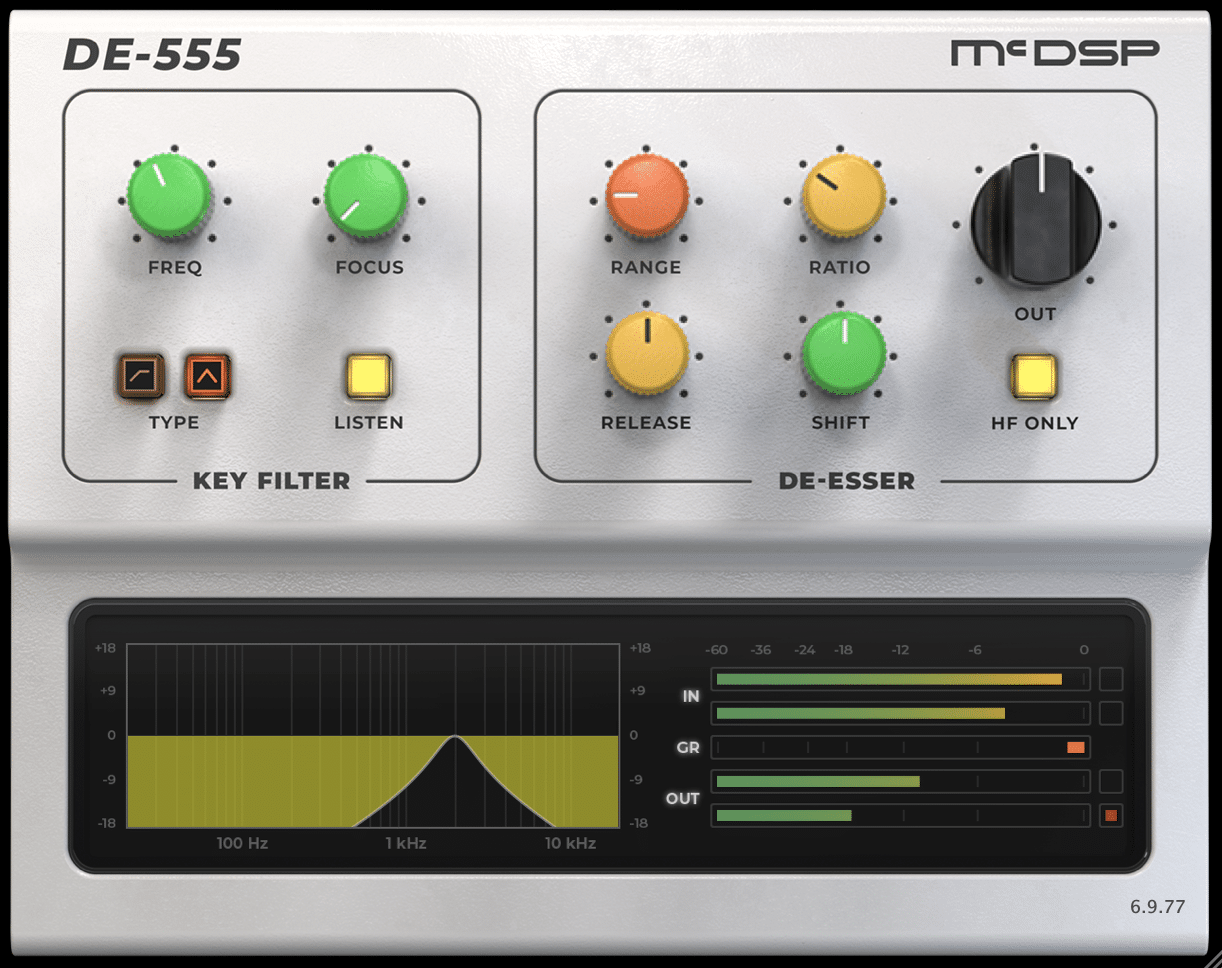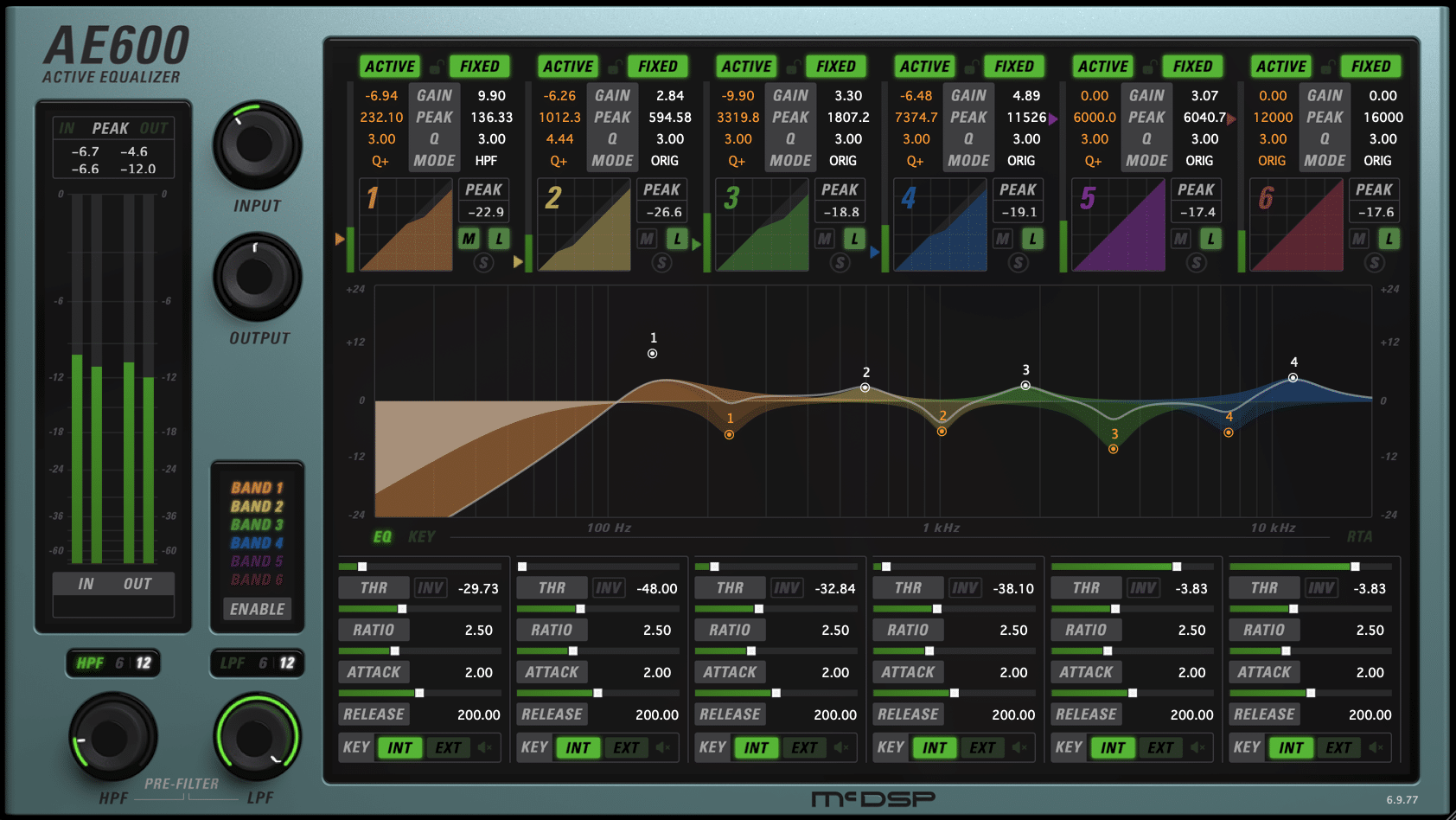Sibilance, also known as the “shh” and “sss” sounds in a vocal, is almost always inherently harsh and distracting within the context of a mix, especially once other processing like compression and EQ are applied. As a result, using a de-esser on a vocal is one of the most common vocal mixing techniques around.
But what happens when you run into a particularly harsh vocal and a de-esser isn’t enough? This is possible, as de-essers are essentially simplified multi-band compressors and usually they only offer you one band of control.
In this post, we will give you some suggestions for controlling a particularly harsh vocal by using dynamic EQ, and then we’ll show you some A/B comparisons!
What Is a De-Esser and What Does it Do?
A de-esser is most commonly used for taming harsh, high-end frequencies that come from vocal sibilance. Think of a de-esser as a compressor that only pays attention to and processes high-end frequencies within a certain frequency range specified by the user, as opposed to a regular compressor that pays attention to and processes the entire frequency spectrum.
The McDSP DE555 Advanced De-Esser
What Is Dynamic EQ and What Is It For?
Similar to a de-esser, dynamic EQ is a type of processing that only processes and pays attention to user-specified frequency ranges. Think about it like this: All de-essers are dynamic EQs, but not all dynamic EQs are de-essers.
Is there a certain frequency range in a guitar track that pokes out of the mix, but otherwise that frequency range isn't distracting? Instead of using a traditional static EQ cut to turn down that frequency range, try using dynamic EQ to turn down that frequency range only when it gets too loud!
That way, you’re telling the dynamic EQ to ignore that frequency range unless its volume rises above the specified threshold, causing it to only affect that frequency range when necessary and to leave it alone the rest of the time.
Why Use Dynamic EQ Instead of a De-Esser?
While a de-esser might do the job just fine most of the time, there’s no beating the extra control offered by dynamic EQ when you need it. As previously mentioned, a de-esser usually allows you to control a single high-end frequency range. However, dynamic EQ allows you to control multiple frequency ranges in different ways!
For instance, let’s say your vocal sibilance is particularly aggressive in the 5 kHz – 7 kHz frequency range, but it’s a bit less aggressive in the 3 kHz – 5 kHz range and the 7 kHz and up range. Instead of using a de-esser to attenuate everything above 3 kHz in the same way, you can use dynamic EQ to treat each of these frequency ranges differently.
The McDSP AE600 Active Equalizer as a De-Esser
McDSP AE600 Active Equalizer
The first step is to instantiate the AE600 on your vocal track. Then, drag a few dynamic, or “Active”, EQ bands up to the high-end on your sound. Lastly, loop a section of your vocal with a lot of sibilance and tweak around the Q, Gain, Threshold, Attack, and Release controls until you end up with something you’re happy with!
Remember not to push these bands too far! We do want to use the AE600 to tame sibilance, but we don’t want it working so hard that it makes the vocal sound unnatural.
We’re glad you asked! Check out a before and after below to hear what exactly using the AE600 as a de-esser sounds like!
Artist: Poems of Sorts
Song: Queen (This song is unreleased)
Producer: Julian Worden
Social Media: @poemsofsorts
As always, we hope you learned something new! Be sure to sign up for our newsletter below to stay up to date on all things McDSP. We’ll see you next time!


